This set of Mechanical Metallurgy Multiple Choice Questions & Answers (MCQs) focuses on “Fatigue of Metals – Strain Life Equation”.
1. Which of the following is the strain-controlled cycle fatigue in which the strain amplitude is kept constant during fatigue process?
a) Car wheel
b) Crankshaft
c) Thermal expansion and contraction of component
d) Dial meter
View Answer
Explanation: The strain can be controlled by controlling the dimension of the element. In the temperature cycle, the part expands and contracts at a given rate with change in temperature. So, it is an example of the strain-controlled cycle.
2. Which of the following curve represents the cycle hardening of the material?
a)
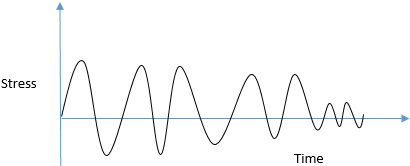
b)
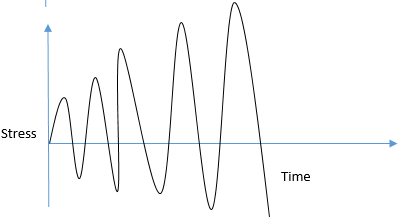
c)
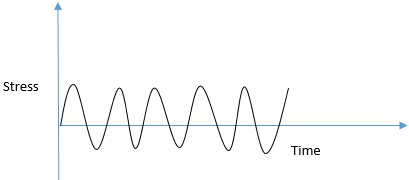
d)
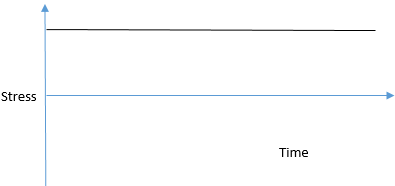
View Answer
Explanation: In the case of cycle hardening, the stress value goes up with each cycle. So, the required amount of stress increases with time or number of cycles.
3. Which of the following curve represents the cycle softening of the material?
a)

b)

c)

d)

View Answer
Explanation: In the case of cycle softening, the stress value goes down with each period, So the required amount of stress decreases with time or number of cycles.
4. The following figure represents the hysteresis loop for cycle softening of the material.
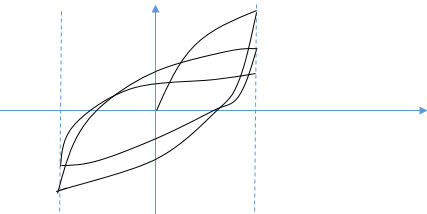
a) True
b) False
View Answer
Explanation: In the case of the cycle softening of the hysteresis loop, the stress response keeps on decreasing with each cycle. So the loop gets smaller and smaller.
5. The Coffin-Manson relation is used to describe the ____________________
a) high cycle fatigue
b) low cycle fatigue
c) stress-strain relation
d) stress-strain cycle relation
View Answer
Explanation: The low cycle fatigue behavior is generally represented by Coffin-Manson relationship. Low cycle fatigue is observed in pressure vessels, steam turbine, power machinery, etc.
6. The Coffin-Manson relation is described as ________________
where Δεp = the plastic strain amplitude
ε’f = fatigue ductility coefficient
2N = number of strain reversal to failure
c = fatigue ductility exponent
a) Δεp/2=ε’f (2N)c
b) Δεp=ε’f (2N)c
c) Δεp/2=ε’f (N)c
d) Δεp=ε’f (N)c
View Answer
Explanation: This relation defines the low cycle fatigue of material. It states the relationship between the strain amplitude to the life of the component before failure.
7. The fatigue ductility coefficient is approximately equal to _______________ for most of the metals.
a) strain hardening exponent
b) true fracture strain
c) true fracture stress
d) coefficient of thermal expansion
View Answer
Explanation: The fatigue ductility coefficient is approximately equal to true fracture strain for most of the metals. It is defined as the strain intercept at 2N=1.
8. Smaller the value of c (fatigue ductility exponent) ____________ will be the life of component.
a) longer
b) shorter
c) no relation
d) depends on the material
View Answer
Explanation: The relationship between the fatigue ductility exponent and cycles is given by:
-> Δεp/2=ε’f (2N)c
So, if smaller the value of c, smaller will be the strain amplitude and longer will be the life of the component.
9. The c (fatigue ductility exponent) is a ______________
a) positive integer
b) negative integer
c) negative fraction
d) positive fraction
View Answer
Explanation: The value of c lies between the -0.5 to -0.7 for most of the metal. This relationship is due to the fact that if the strain amplitude is larger, the failure cycles will be shorter.
10. Which is not a characteristic feature of low cycle fatigue?
a) High-stress amplitude
b) High strain amplitude
c) Thermal fluctuation
d) Low-stress cycle
View Answer
Explanation: The low cycle fatigue is associated with either high stress or high strain amplitude, which causes premature failure of the components.
Sanfoundry Global Education & Learning Series – Mechanical Metallurgy.
To practice all areas of Mechanical Metallurgy, here is complete set of 1000+ Multiple Choice Questions and Answers.
If you find a mistake in question / option / answer, kindly take a screenshot and email to [email protected]
- Practice Metallurgical Engineering MCQs
- Check Metallurgical Engineering Books
- Apply for Metallurgical Engineering Internship
- Check Mechanical Metallurgy Books
